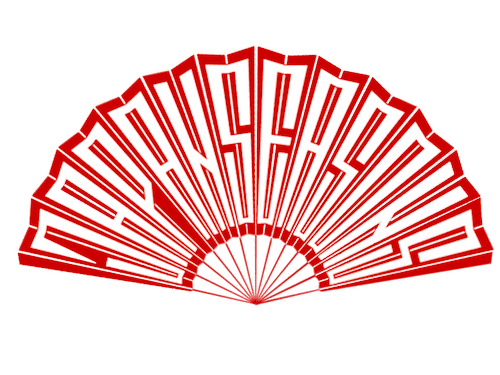Tokyo in Japanese means the Eastern Capital. This name was given to the samurai city of Edo after the capital was moved here from Kyoto in the second half of the 19th century. The largest city in Japan never ceases to amaze travelers with its cleanliness, convenient transportation, and friendliness of the locals who are ready to overcome language barriers and help their foreign guests. Tokyo attracts everybody interested in modern Japan: fans of contemporary architecture and street fashion, video games, and unusual cafes.
- Tours
- Winter tour
Winter tour to Japan “Japan tour Dec 8-17, 2023”
December is tricky month in many parts of the world but in Japan, especially at the Eastern shore, it is one of the most comfortable months for a traveler. Clear sky allows you to see tourist attractions in their best appearance and mild day temperatures make it easy to wander around whole day long.
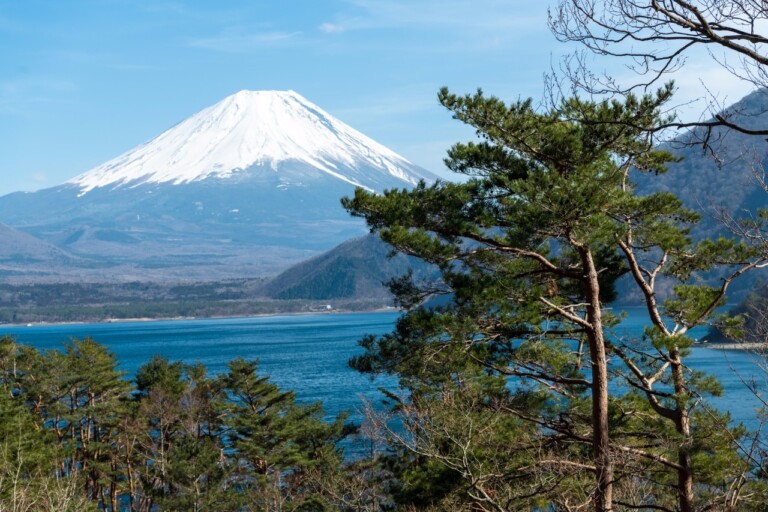
GROUP TOUR ON FIXED DATE
- Group tour
Dates
- 8 — 17 December 2023
Duration
- 10 days / 9 nights
Price
- On request
Itinerary
- Tokyo → Tokyo → Kawaguchiko → Kawaguchiko → Kyoto → Kyoto → Amanohashidate-Izushi → Himeji → Miyajima → Tokyo
Daily itinerary
Dec 8, 2023 (FRI)
Self-transfer to Tokyo
Check-in at the hotel, rest
Dec 9, 2023 (SAT)
Meet your tour guide at the hotel lobby
Tokyo sightseeing: Asakusa district, Sensoji Buddhist Temple, Kappabashi Kitchenware Town, Fish market, Shibuya and Ginza
Back to the hotel

Tokyo
Dec 10, 2023 (SUN)
Meet your tour guide at the hotel lobby
Move to Kawaguchiko
Fuji area sightseeing: Pagoda Chureito, Lake Kawaguchiko
Transfer to the national-style ryokan hotel, check-in
Dinner at ryokan, rest in the hot springs
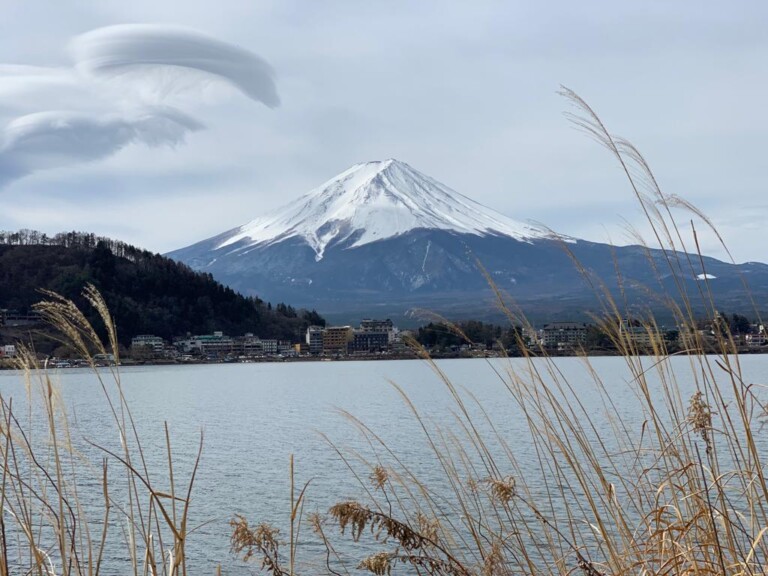
Mount Fuji
Fuji is an active stratovolcano on the Japanese island of Honshu, 100 kilometers southwest of Tokyo, on the border of Shizuoka and Yamanashi prefectures. The height of the volcano is 3,776 m. The circumference of the volcano’s base is 125 kilometers, and the diameter is 40-50 kilometers. The crater’s rim is about 500 meters, and the depth is about 250 meters. There are eight peaks around the crater, each with its name. The highest point of Fujisan is Kengamine Peak. The volcano is active; the last eruption was back in 1707-1708.
The mountain and its surroundings are part of the Fuji-Hakone-Izu National Park and have been a UNESCO World Heritage Site since 2013.
There are a Shinto temple, a post office, and a weather station on the top of Mount Fuji.
The mountain has a perfect conical shape and is considered sacred, serving as a religious pilgrimage and a tourism site. For centuries the beautiful outline of Fuji has been a popular theme in Japanese art.
Dec 11, 2023 (MON)
Meet your tour guide at the hotel lobby
Fuji area sightseeing: traditional village (Saiko Iyashi no Sato), Shiraito waterfall
Transfer to the Shinkansen station
Move to Kyoto by shinkansen bullet train
Check-in at the hotel

Mount Fuji
Fuji is an active stratovolcano on the Japanese island of Honshu, 100 kilometers southwest of Tokyo, on the border of Shizuoka and Yamanashi prefectures. The height of the volcano is 3,776 m. The circumference of the volcano’s base is 125 kilometers, and the diameter is 40-50 kilometers. The crater’s rim is about 500 meters, and the depth is about 250 meters. There are eight peaks around the crater, each with its name. The highest point of Fujisan is Kengamine Peak. The volcano is active; the last eruption was back in 1707-1708.
The mountain and its surroundings are part of the Fuji-Hakone-Izu National Park and have been a UNESCO World Heritage Site since 2013.
There are a Shinto temple, a post office, and a weather station on the top of Mount Fuji.
The mountain has a perfect conical shape and is considered sacred, serving as a religious pilgrimage and a tourism site. For centuries the beautiful outline of Fuji has been a popular theme in Japanese art.
Dec 12, 2023 (TUE)
Meet your tour guide at the hotel lobby
Kyoto sightseeing: Golden Pavilion, Ryoanji Temple, tea ceremony, Kiyomizu-dera Temple
Back to the hotel
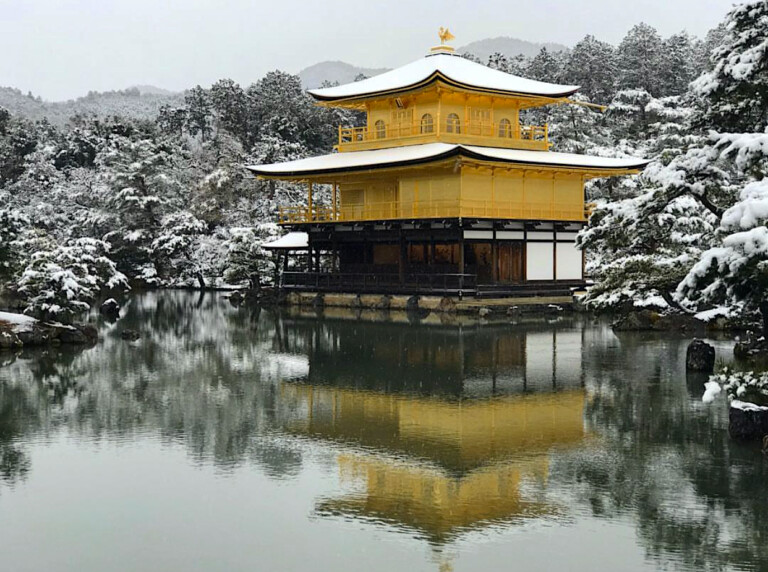
Winter Kinkakuji Temple
Kinkaku-ji Temple, often called the Golden Temple, is one of Japan’s most famous temples and Kyoto’s main attractions. Built at the end of the 14th century, this complex, with its three-story pavilion covered with gold leaf, captivated the minds of its contemporaries. The famous Japanese writer Yukio Mishima captured its fate and glory in the novel “The Golden Temple.” Today Kinkaku-ji Temple is a must-see on any traveler’s itinerary in Japan. In addition to the famous pavilion, the UNESCO World Heritage Site also features a traditional walking garden, small waterfalls, and a tea house, representing the culture of the samurai era.
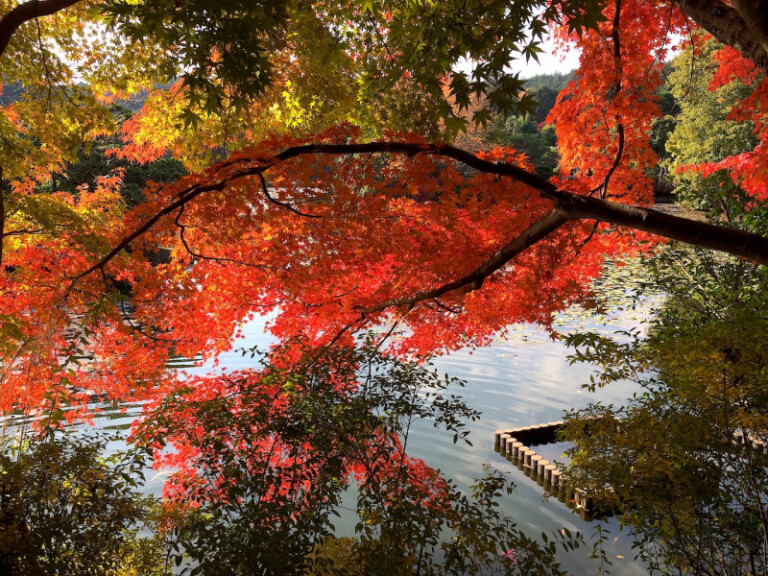
Ryōan-ji Temple (autumn)
Ryōan-ji Temple, located in northern Kyoto, was founded in the mid-15th century. The famous rock garden was also established at the same time. The garden is now considered one of the best in Japan and is protected as a UNESCO World Heritage Site.
For centuries, the Ryōan-ji Temple garden has attracted visitors trying to solve its mystery: why can you see only 14 of the 15 stones? And what does the composition of sand and rocks represent?
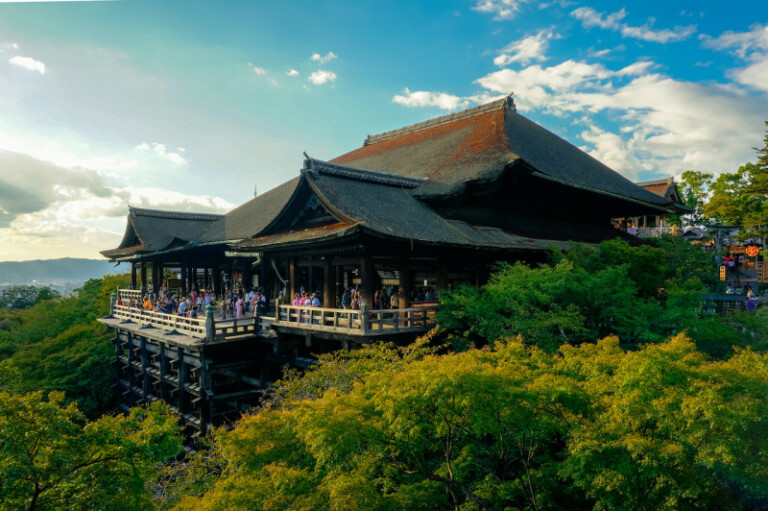
Kiyomizu-dera Temple (Pure Water Temple)
The Pure Water Temple, or Kiyomizu-dera, is one of Kyoto’s most famous and most visited temples and is a UNESCO World Heritage Site. It was founded on a mountainside near a spring. Its clear water is said to bestow health, longevity, and wisdom. The temple’s main attraction is its main hall, with an open veranda built on stilts over a cliff. The structure, assembled without a single nail, towers over Kyoto, offering a beautiful view of the old capital. Cafes and stores lining the road to the temple sell Kyoto sweets, ceramics, and souvenirs for all tastes.
Dec 13, 2023 (WED)
Meet your tour guide at the hotel lobby
Visit Kyo-ryori (Kyoto cuisine) Exhibition
Transfer to the station, move to the Sea of Japan
Check-in at the hotel, rest
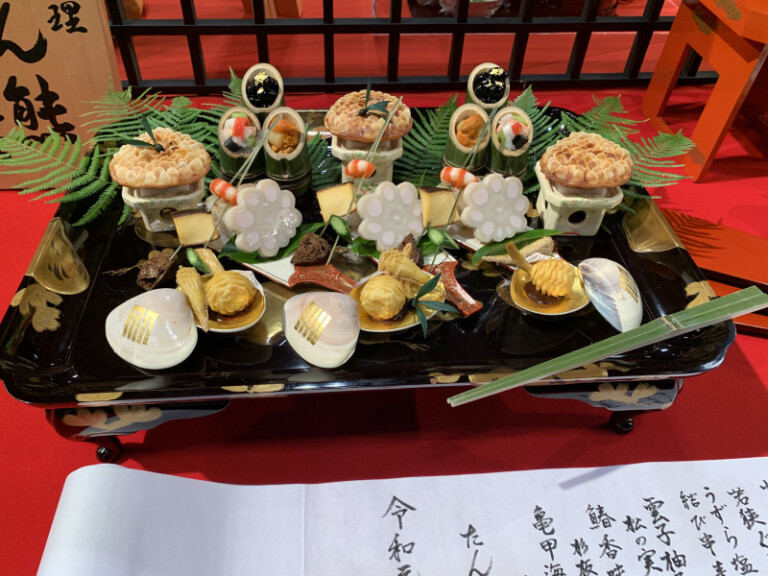
Kyoto Cuisine Expo
Kyo-Ryori Tenjitaikai is an exhibition of Kyoto cuisine held annually in the Old Capital since 1886. It brings together chefs from the city’s best restaurants, among which about a hundred are Michelin-star chefs!
Kyoto cuisine is famous for its refined taste and the freshest and strictly seasonal products and for its exquisite serving that presents each dish in a unique way that allows you to fully enjoy the taste, aroma, and appearance of a culinary masterpiece.
At the exhibition, you can try samples of ordinary everyday and festive dishes, enjoy the demonstration performances of masters of fish cutting and artistic serving, and watch competitions among professionals and amateurs.
Dec 14, 2023 (THU)
Meet your tour guide at the hotel lobby
Amanohashidate sightseeing: Amanohashidate View Land
Transfer to “Little Kyoto” Izushi town
Izushi sightseeing: Izushi Shinkoro Clock Tower and Castle, old town
Move to Himeji
Check-in at the hotel, rest
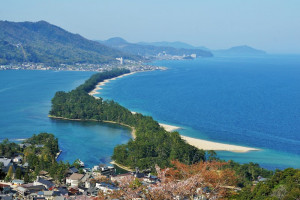
Amanohashidate "Heaven's Bridge" Sandbar
Overgrown with pine trees, a centuries-old narrow sandbar in Miyazu Bay is one of Japan’s three most beautiful scenic views. “Heaven’s Bridge,” as its name’s translated, looks equally beautiful from both sides of the bay. We will admire the beauty of Heaven’s Bridge from the observation deck and walk across the white sand among the pine trees. Blue sky, turquoise sea water, white sand, and dark green pines will not leave anyone indifferent.
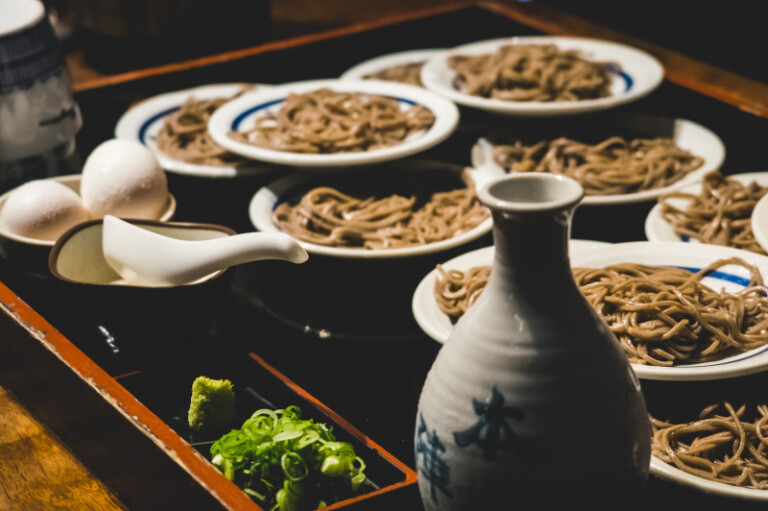
Izushi Castle Town
The historical area of Izushi, the so-called “little Kyoto,” is a beautiful provincial center of medieval Japan, which the local feudal lords carefully arranged in the manner of the imperial capital. There are a few sightseeing attractions here: the walls and towers of the castle, the oldest street clock in Japan (1881), the colorful Inari Shrine, and the old Kabuki theater. In Japan, the town is famous for its buckwheat noodles izushi-soba served on small plates. The tradition of such serving dates to the Edo period when Izushi street vendors began to serve noodles in convenient portions on small plates. Local potters immediately mastered the production of such dishes, which was the beginning of Izushi pottery.
Dec 15, 2023 (FRI)
Meet your tour guide at the hotel lobby
Visit White Heron Castle Himeji-jo
Move to Hiroshima by shinkansen bullet train
Transfer to Miyajima island
Check-in at the hotel, rest
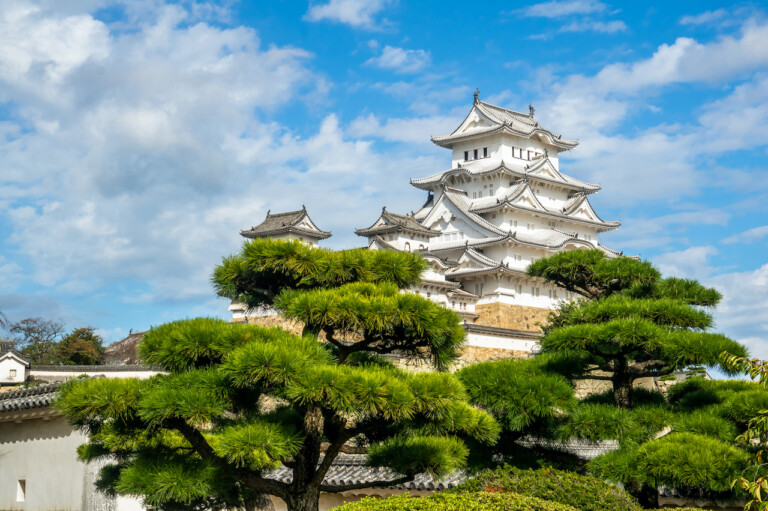
Himeji Castle
Himeji Castle is one of Japan’s 12 historically preserved castles and is considered the most beautiful. It is a UNESCO World Heritage Site. The castle was built in the early 17th century and was second in size and beauty only to the lost Edo Castle, the residence of the Tokugawa shoguns. Unscathed by wars, fires, and natural disasters for 400 years, the castle is often featured in movies about the samurai era. Fans of classic Japanese cinema remember it for Akira Kurosawa’s “Ran.” The impregnable castle holds secrets of Japanese military strategy and keeps stories of gods and ghosts. The name “White Heron Castle” reflects the beauty of its walls.
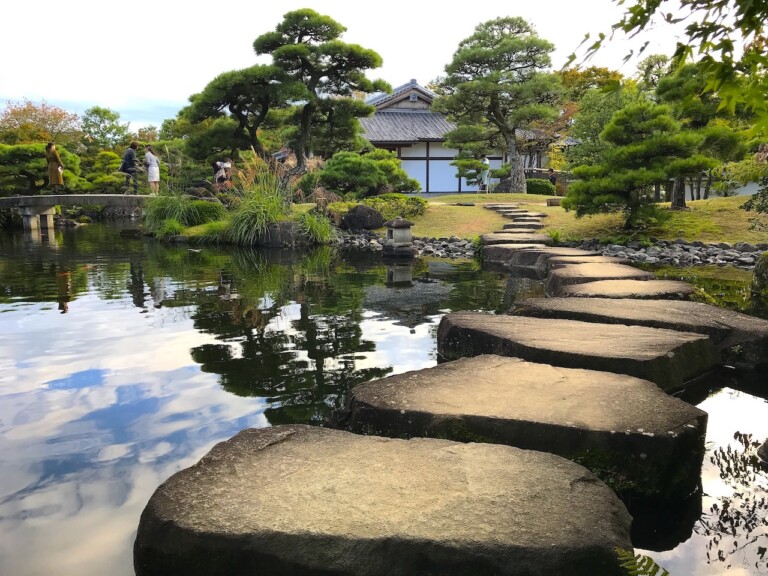
Kokoen Garden
Kokoen Garden was created near Himeji Castle relatively recently, in 1992, for the city’s 100th anniversary. There are nine landscaped gardens of different styles in a small area of the complex, where you can enjoy the seasonal flowers and learn a lot about Japanese landscape art.
Dec 16, 2023 (SAT)
Meet your tour guide at the hotel lobby
Miyajima sightseeing: Grand Torii Gate - “O-torii”, Itsukushima Shrine
Move to Tokyo by shinkansen bullet train
Check-in at the hotel, rest
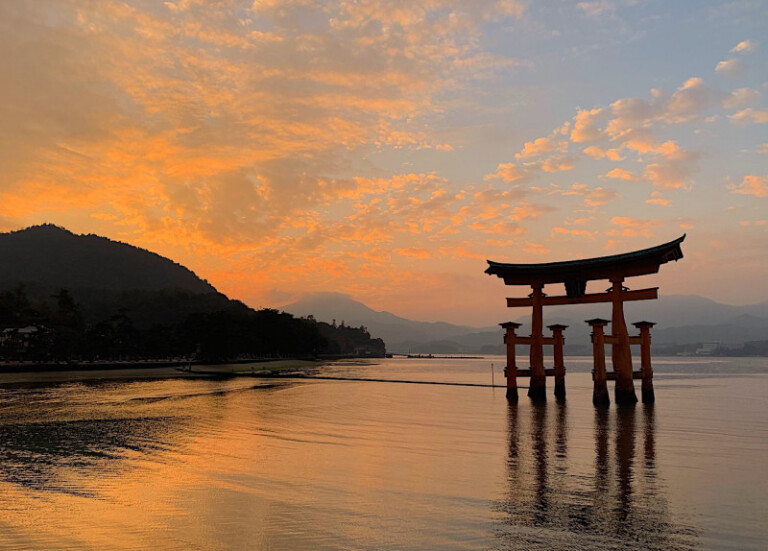
Itsukushima Shrine
Itsukushima Shrine is one of Japan’s most famous Shinto shrines located on the island of Itsukushima (also known as Miyajima Island). The sight of the main torii gate set in the sea is one of Japan’s three most famous views. The shrine was founded in the 6th century and took its present form in the 12th century when it was extensively expanded and rebuilt by Taira no Kiyomori. The buildings we see today were built in the mid-16th century, although they are similar in design to those of the Taira clan era. The “floating” shrine is a UNESCO Cultural Heritage Site and a National Treasure of Japan.
Dec 17, 2023 (SUN)
Self-transfer to the airport
Departure
